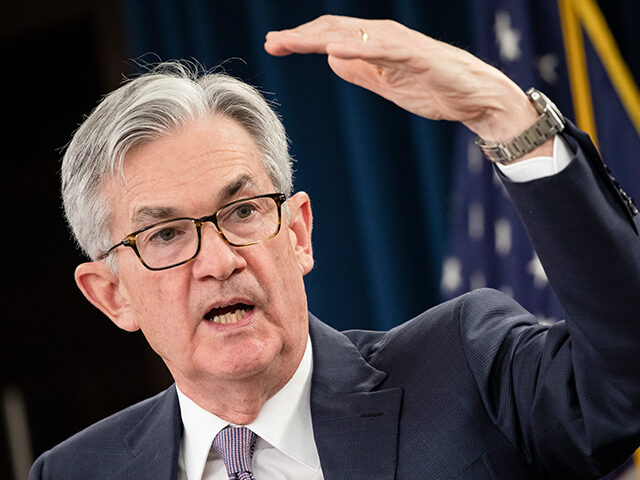Federal Reserve Chair Jerome Powell appeared to confirm on Thursday expectations that the Fed will deliver a third straight 75 basis point hike this month.
Market prices on derivatives that allow traders to speculate on the size of Fed hikes or cuts now imply an 86 percent chance that the Fed will raise its target rate by three-quarters of a percentage point at its two-day meeting beginning September 20.
Powell spoke at a virtual Q&A to the Cato Institute’s monetary policy conference on Thursday. It is the last scheduled public appearance for the Fed chief before the central bank’s self-imposed pre-meeting blackout period begins on September 10. Powell’s speech was closely watched to see if he would try to tamp down expectations for a jumbo hike.
By most accounts, he did not. Although he spoke in a more relaxed manner and less-structured setting than the brief remarks he delivered nearly two weeks ago in Jackson Hole, Wyoming, Powell reiterated his hawkish message from the monetary policy conference.
“We need to act now, forthrightly, strongly—as we have been doing—and we need to keep at it until the job is done to avoid that,” Powell said. “My colleagues and I are strongly committed to this project and will keep at it.”
Powell also once again pushed back on the idea that the Fed might start cutting rates next year.
“History cautions strongly against prematurely loosening policy,” Powell said.
There have been many analysts who have said the Fed might settle on a higher inflation target than two percent, at least in the near term, including Goldman Sachs economist Jan Hatzius and Harvard economist Jason Furman. Powell appeared to respond to that on Thursday, as well.
“Finally, stabilizing at a 3% inflation rate is probably healthier for the economy than stabilizing at 2%—so while fighting inflation should be the central bank’s only focus today, at some point the Fed should reassess the meaning of victory in that struggle,” Furman wrote in a recent WSJ opinion piece.
“The Fed has the responsibility for price stability, by which we mean 2 percent inflation over time,” Powell said. “The longer inflation remains well above target, the greater the risk the public does begin to see higher inflation as the norm, and that has the capacity to raise the costs of getting inflation down.”

COMMENTS
Please let us know if you're having issues with commenting.